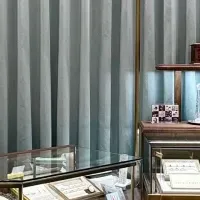
Middle East Luxury Furniture Market Set for USD 401.7 Million Growth from 2025 to 2029
Growth of the Luxury Furniture Market in the Middle East
The luxury furniture market in the Middle East is on the verge of significant expansion, with an anticipated increase of USD 401.7 million projected from 2025 to 2029. This promising growth is forecasted to occur at a compound annual growth rate (CAGR) of 4.2%. Such expansion is greatly influenced by the rising number of office spaces across the region and an increasing trend towards more sustainable, eco-friendly furniture selections.
The Middle East luxury furniture market has recently been shaped by several factors that have shifted consumer preferences and market dynamics. The trend indicates not only a preference for high-quality materials such as wood, glass, and metal, but also a growing demand for products that demonstrate durability and aesthetic appeal. The impact of real estate developments, combined with high oil prices, is also palpable, affecting furniture sales in both residential and commercial sectors.
Trends Driving Market Growth
1. Rising Demand for Eco-Friendliness: One of the most significant trends are the eco-friendly initiatives being adopted in the market. Consumers are increasingly opting for recycled and refurbished pieces, as they aim to reduce environmental impact and contribute positively to sustainable practices. Non-profit organizations have even begun promoting guidelines for eco-friendly furniture suppliers, which has led to greater awareness and acceptance.
2. Technological Advancements: As consumers become more tech-savvy, there is a noticeable push towards automatization and digitalization within the furniture shopping experience. The rise of e-commerce platforms and social media-driven marketing campaigns has enabled consumers to access a wider selection of furniture options while enjoying personalized shopping experiences.
3. Emergence of Multifunctional Furniture: Particularly among millennials, there is a notable increase in demand for multifunctional furniture pieces. For instance, foldable beds and modular sofas blend practicality with style, catering to the needs of modern living spaces.
4. Online Sales Boom: The ascendancy of online sales channels, including flagship stores and e-commerce websites, provides consumers with the convenience of browsing and purchasing luxury furniture from the comfort of their homes. This trend emphasizes the importance of a robust digital presence for furniture brands.
Challenges Facing the Market
Despite the promising growth potential, the luxury furniture market in the Middle East faces several challenges, primarily dominated by the rising trend of furniture rentals. Urbanization has led many consumers to favor renting over buying, particularly in metropolitan areas where rental prices are often more affordable than purchasing furniture outright.
Additionally, the market is also faced with competition from both traditional departmental stores and a rapidly expanding e-commerce landscape. Consumers are becoming increasingly price-sensitive, which means that firms must continuously adapt to the competitive landscape while maintaining quality and brand integrity.
Key Players in the Market
Significant contributors to the luxury furniture market in the Middle East include established brands such as Anna Casa Ltd., Auraliving, and LVMH Moet Hennessy. These companies not only provide artisan quality but also lead certain trends within the market.
Conclusion
In conclusion, as the Middle East luxury furniture market gears up for substantial growth over the next few years, stakeholders must remain vigilant in adapting to emerging trends, understanding consumer behaviors, and leveraging technology. The multifaceted dynamics at play in this industry promise an exciting yet challenging landscape for both established players and new entrants alike, and eco-friendly products are likely to be at the forefront of this budding market.
Topics Consumer Products & Retail)










【About Using Articles】
You can freely use the title and article content by linking to the page where the article is posted.
※ Images cannot be used.
【About Links】
Links are free to use.